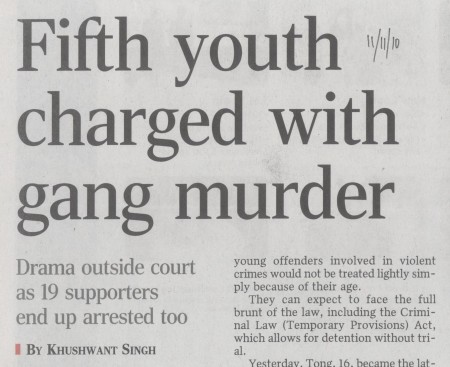Much ink has been spilt on analysing the recent riots in Singapore’s Little India. There is a general consensus that the riots were sparked by the accidental death of an Indian foreign worker who was knocked down by the bus, but there are numerous theories about why the riots developed soon after.
Some speculate that alcohol consumption was a contributing factor. Singapore’s government ministers certainly thought of it that way in light of their immediate response to ban the sale of alcohol in the area over this weekend. Some speculate that the persistent exploitation of foreign workers in Singapore was simply fuel that was waiting to be ignited. They point to the Chinese bus drivers strike in November 2011 of foreign workers having similar roots of discontent. Others speculate that the rioters were a vigilante mob determined to seek justice for the death of their comrade, a culture typical of South Asian societies but alien to the “Singaporean way” of peace and stability.
Yet, attractive as these speculations may be, there is simply no consistent evidence to back up such claims as to why the riot happened. Was it really a “fact” that “many of the Indian workers were under the influence of alcohol”? Was it really a “fact” that these particular workers were not exploited or exploited? Was it an obvious “fact” that these Indian foreign workers had a different idea of justice that was alien to Singaporean society? We may never know the truth because many of us were not at the scene on that night, and the nebulous development of riots means that there is probably no singular truth to any causal story.
In addition, we also have to be mindful of the tendency of dichotomising the incident into an “us” versus “them” episode. Not all Singaporeans are angels. Old Singaporean uncles regularly get drunk a few blocks away at Jalan Besar Food Centre or along the streets of Geylang, and sometimes they get into fights, but many times they do not. There is a growing trend of Singaporean youths binge drinking and passing out along the streets near nightclubs.[1] Some Singaporean teenagers get into riots with rival gangs or secret societies, sometimes slashing each other to death.[2] The “Singaporean way” is a social construct that selectively highlights what is “good” about Singaporean society and ignores its ugly and marginalised fringes.
If there is indeed any main lesson to be learnt from these riots, it should be clear that there is really no simple lesson to be learnt at all. Assuming that the riots were as spontaneous and as complex as we make them out to be, then better to acknowledge and recognise the complexity and inherent spontaneity, rather than learning the wrong, simplistic, or knee-jerk lessons from it.
Elvin Ong is currently a PhD graduate student in the Department of Political Science at Emory University. He is a graduate of Singapore Management University and holds an MPhil in Politics (Comparative Government) from the University of Oxford. He can be reached at elvin.ong@emory.edu
 Facebook
Facebook  Twitter
Twitter  Soundcloud
Soundcloud  Youtube
Youtube  Rss
Rss 
